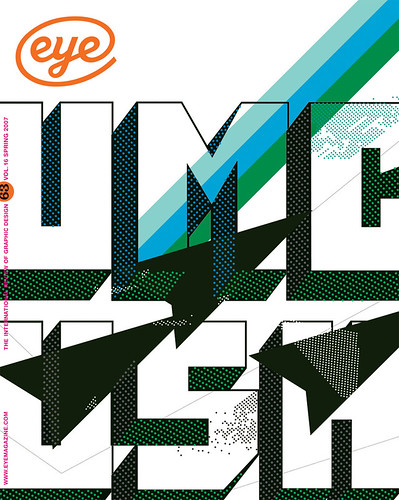Spring 2007
Aicher’s Heroic Aspirations
Otl Aicher
By Markus Rathgeb.<br>Phaidon, £45When the German designer Otl Aicher died in 1991, a particular kind of graphic design disappeared with him. Like others, especially those working in the 1960s, he saw his work as problem-solving. Just as important, according to this book, was a life-long search for ‘a comprehensive interaction between life and design’, which began when he was a teenager confronting Nazism, continued with the task of rebuilding after the destruction in the Second World War, and developed into his view of design as an agent for social change. Despotism and ideology were to be replaced by reason and sense, principles that governed Aicher’s professional life.
Markus Rathgeb’s lively, solidly researched account begins with the young Aicher’s social and political engagement founded in classical and Catholic philosophy. He suffered for refusing to join the Hitler Youth and in 1942 his close friends Hans Scholl and his sister Sophie were sentenced to death for distributing anti-Nazi leaflets. After the war Aicher married one of their sisters. Together he and Inge Scholl contributed to German reconstruction in their home town at Ulm’s School of Adult Education (Volkshochschule). Although Aicher spent a short time as an art student in Munich, he was concerned with all kinds of design and planning that promised a better society. His first graphic works were posters for lectures, and the style he developed – vertical double-square formats with geometrical divisions and lettering in Futura Bold – is much reproduced in histories of graphic design.
The clear influence in the Volkshochschule posters is the Swiss artist-designer Max Bill, and it was Bill who became head of the more radical institution that Aicher and his friends were planning. This was to become the Ulm School of Design (Hochschule für Gestaltung or HfG). With Bill as its architect and first director, the HfG opened in 1955. The book follows Aicher’s years as co-founder, head of the Visual Communication department and, eventually, director.
The school’s policies were constantly revised; Aicher was often at odds with some of the more intellectualising faculty. Relations with industry increased. Teams in the school designed products and graphics for the domestic electrical equipment firm Braun; Aicher led a group responsible for the complete house style of Lufthansa, from aircraft livery to luggage labels. But there was nothing new in this other than the design process, described in the book as the Ulm Model. Known at the HfG as ‘operational research’, its methods were imported from studies that accompanied the introduction of computers, such as cybernetics, systems theory, semiotics and information design. Its tools included algorithms, check lists, the ordering of information into hierarchies and, more simply, the application of the grid wherever possible.
The conflict between the kinds of design demanded by the German economic miracle and Aicher’s social aspirations were at the root of his exasperation with Hochschule polemics. After Ulm he set up his studio in the country. From here he designed identities for banks and companies large and small. The focus on teamwork expressed in the Lufthansa project helped Aicher win the commission as overall designer for the 1972 Munich Olympics. The work done under his leadership, especially the sign system and pictograms identifying each sport, made him an international figure. (See Picture, pp.4-5.)
Markus Rathgeb shows teamwork as central to Aicher’s life. He would hold court at his studio-home in Rotis, where clients had to listen to his views of how a company should be run in the interests of the workforce as well the consumer, and be told how to choose flowers for their offices. His assistants lived in surrounding villages. He gave the name Rotis to the typeface family he designed, an attempt to reconcile sans serif and roman by a semi-serif form.
Rathgeb subjects this to an elaborate and erudite critique, noting that more money was spent on its promotion than on the design and production of the typeface itself.
Typeset in Rotis, this is a fine book, well edited, well illustrated and well designed. Rathgeb paints the full picture, sharpened by contributions from colleagues and clients. In describing the design process, often in detail, he does justice to the seriousness of Aicher’s aspirations.
Richard Hollis, designer, writer, London
First published in Eye no. 63 vol. 16 2007
Eye is the world’s most beautiful and collectable graphic design journal, published quarterly for professional designers, students and anyone interested in critical, informed writing about graphic design and visual culture. It is available from all good design bookshops and online at the Eye shop, where you can buy subscriptions and single issues.

